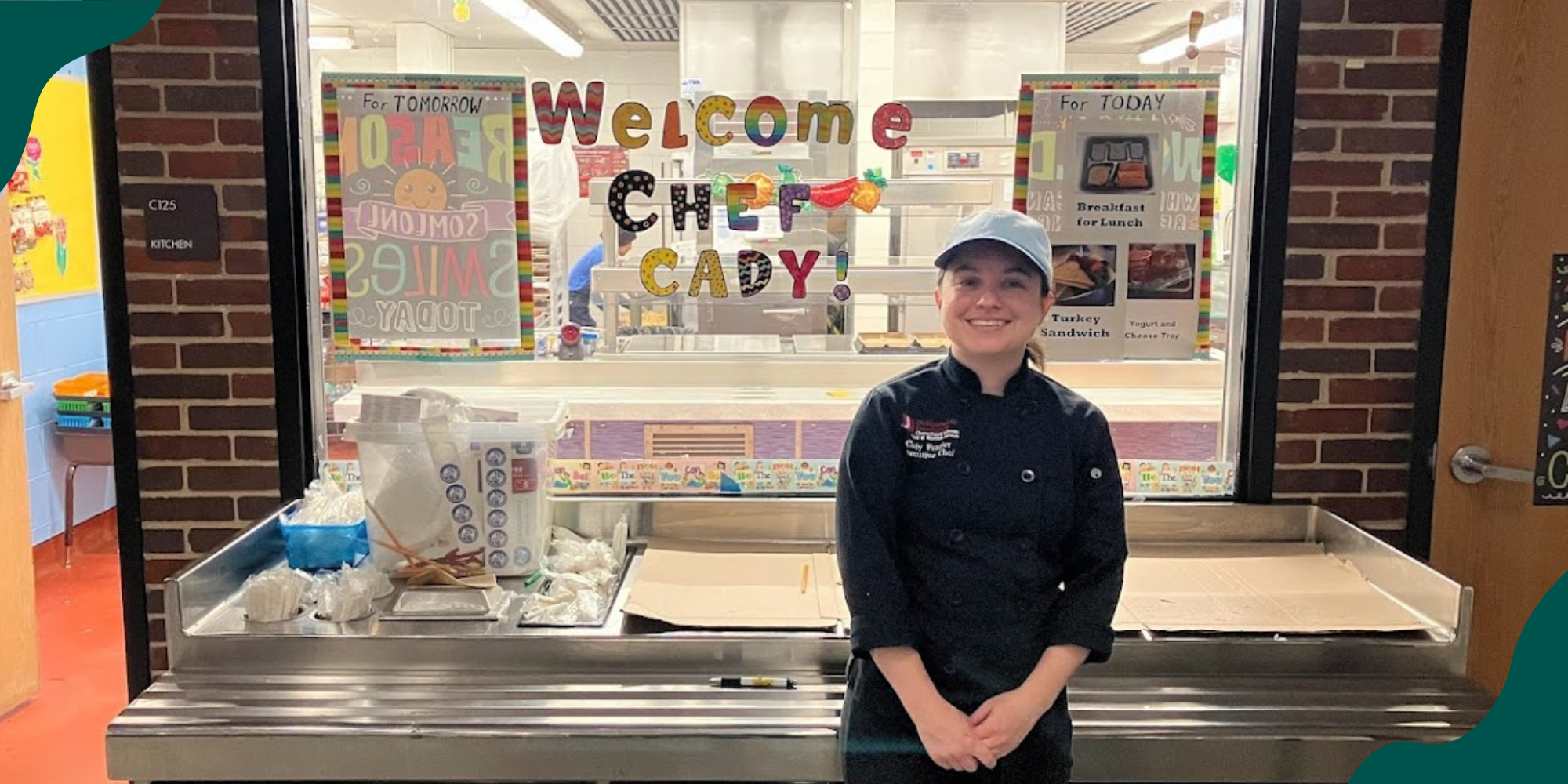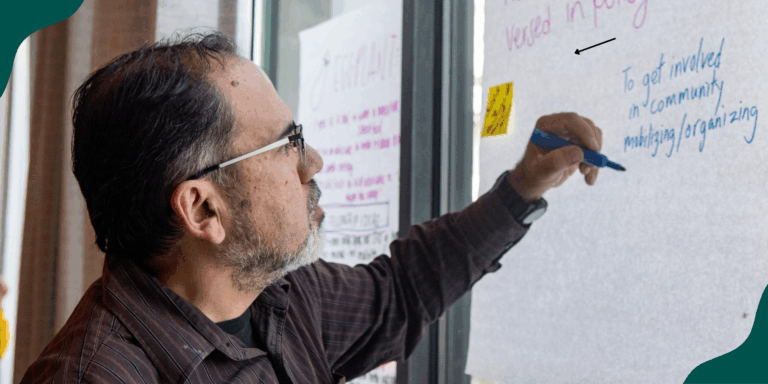Alumni Spotlight: Cady Molloy, School District Executive Chef
How this alum coordinates nearly 40,000 school meals a day.
Help nourish students’ minds, bodies, and hearts this holiday season!
How this alum coordinates nearly 40,000 school meals a day.

Welcome to another Alumni Spotlight, where we introduce you to a FoodCorps alum doing impactful work after service. Today’s featured alum is Cady Molloy (NY ’18), Executive Chef of Cherry Creek School District. Read on to learn how she’s serving tens of thousands of meals a day and changing the narrative around food in school.
Cady: I am the executive chef for Cherry Creek School District. Cherry Creek is a medium-size district just outside of Denver, Colorado. We have 53,000 students, 65 schools, and are serving nearly 40,000 meals daily. I started with the district a few years ago at a time when we were just starting to pull out of COVID. My work has been focused on increasing scratch cooking: developing a comprehensive culinary training for the kitchen teams and building a food literacy program to connect students to the food served in the cafeteria.
The district also has a central bakery, which I supervise. The bakery is the only K-12 central bakery in the state of Colorado. In the bakery, we produce all of the sandwich bread, dinner rolls, quick breads, granola, and cinnamon rolls for the district. We recently started bringing in locally milled flour that is made from locally grown wheat. All of our bakery recipes were also recently retested to be dairy- and egg-free to increase accessibility and sustainability and decrease costs.
I started out by observing the program to see where there were gaps with skills, equipment, purchasing, recipes, or small wares. From there I built the foundation. I created a culinary training program that provides all staff with a full day of culinary training before they start working in the kitchen and ongoing training throughout the year. Training covers topics like knife skills, kitchen organization, food safety, and how to use a variety of kitchen equipment.
I also provide education to all levels of staff on what scratch cooking is and why it is beneficial. I purchased small wares to support cooking, including immersion blenders, knife sharpeners, and food processors. I wrote a couple of grants to help make these purchases. To implement recipes, I started with vegetables. Vegetable recipes that I added include roasted broccoli, street corn, coleslaw, and roasted chickpeas.
From there I looked at entrees that were already popular and started to transition those to scratch. Last year we switched from pre-made orange chicken and teriyaki chicken to scratch made. Next year we will be switching the macaroni and cheese. For all recipes, I conduct student taste tests to encourage participation and provide step-by-step instructions for staff.
One of the biggest challenges as a chef in schools is the negative perception of school food. This outlook is widespread and comes from students, family, media, and the community. As soon as food is seen on the classic five-compartment tray, there seems to be an immediate bias about that food. I am continuously working to change this idea of the food we serve and reinforce that school food can be delicious!
I do this through family and student engagement and community outreach. I teach a monthly class to high school culinary students called “The Past, Present, and Future of School Food”; meet with student council leaders; organize family events; and speak with the local media to start to shift the regard around our meals.
Healthy School Meals for All! There are currently only nine states in the U.S. that have a policy to support universal school meals. Colorado passed Healthy School Meals for All two years ago. The district I work for has had a nearly 60% increase in participation due to this policy.
Every child should have access to nutritious meals during the school day. There is no other part of the school day that separates students based on their family income. When every student can eat, stigma is reduced and the cafeteria becomes a more equitable environment.
It feels absurd to have to say this in 2025, that this is not the norm yet, but children cannot learn, develop, or feel safe when they are hungry. We have a responsibility as a society to ensure no child is hungry, and school meals are a highly effective way to do this. The goal is for this to be a national policy, so there is no child without access.
I am currently working on developing a Food Literacy Program as part of the Food and Nutrition Services Department for Cherry Creek School District. Food literacy is a comprehensive take on food education. The goal of the Food Literacy Program is to support students and families in developing cultural, environmental, culinary, and nutritional understanding of the foods served in the cafeteria. I’ve started to build the foundation of the program. We are currently leading educational cafeteria taste tests, have started working with a local SNAP education program to provide hands-on cooking lessons, and I’m developing a “Cafeteria Connection Curriculum.”
To the department’s recent strategic planning, we have added a five-year goal to implement food literacy, including school gardens, across the district. Serving with FoodCorps was a great opportunity to see the positive impacts of food education when paired with scratch cooking in the cafeteria. My goal is to have this up and running and replicable for other districts over the next few years.
One of my favorite books relating to school food and food policy is “The Labor of Lunch” by Jennifer Gaddis. This book addresses the role of food service staff in the school food movement and the need to provide good, fair jobs within child nutrition. The need to prioritize labor when looking to improve school food is critical and outlined perfectly in this book.
Hungry for more? Connect with Cady on LinkedIn, and learn about other FoodCorps alumni making a difference.

Winterizing Your School Garden

5 Awesome Small Businesses by FoodCorps Alums

How to Advocate to Your School Board for Nourishing Food